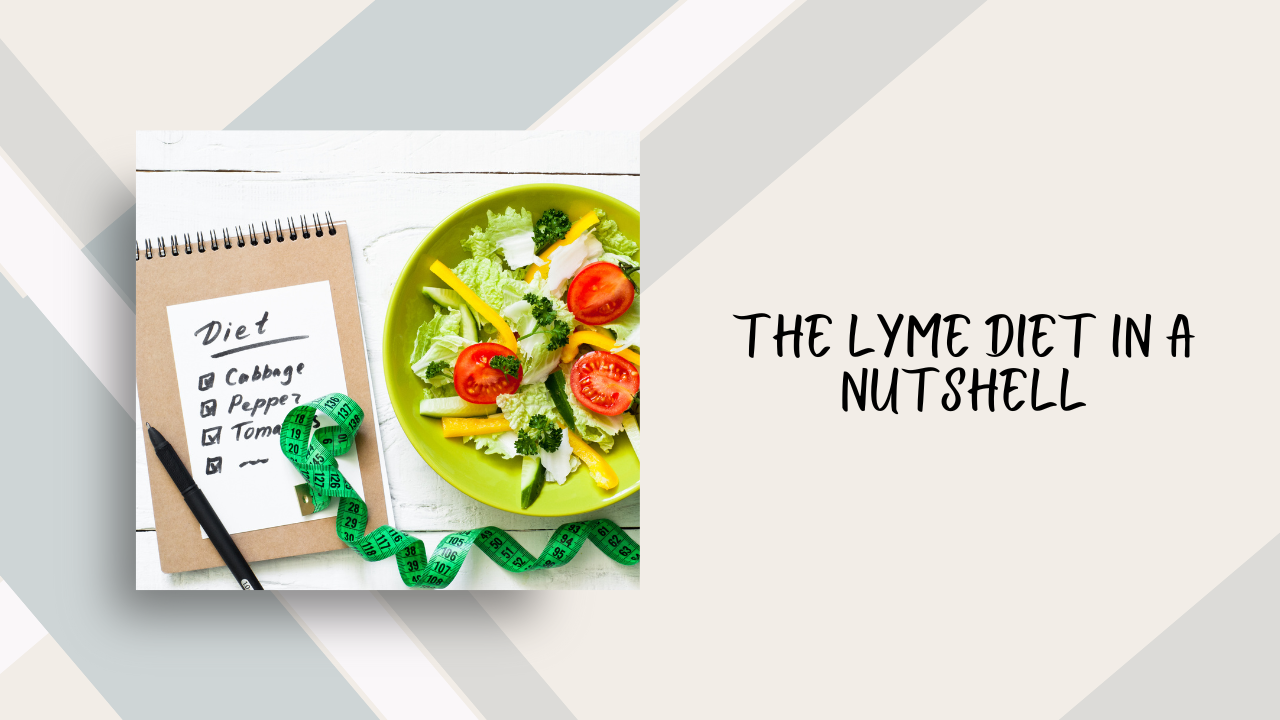The Lyme Diet in a Nutshell
Apr 18, 2023
I started writing my first book, The Lyme Diet, at my mum’s kitchen table in Australia while on vacation some years ago. I set out to write a patient handout because a lot of my patients were asking about what to eat to help themselves recover. Fast forward and I kept writing and writing, and a few months later, The Lyme Diet was published!
Here’s a cliff-notes version of The Lyme Diet and what I recommend as general dietary guidelines to help recovery from chronic illness:-
- Avoid sugar
Sugar is a drug, that’s all there is to it. There are two main reasons I strongly encourage to get people off sugar. The first is that it promotes Candida overgrowth in the gut. Yeast feeds off sugar, so to starve out yeast, we have to minimize its food source. This is particularly true for people on long-term antibiotics for Lyme, where gut dysbiosis is one of the main side effects we’re trying to prevent.
The second reason is that sugar is immune suppressive. One study showed that one teaspoon of sugar suppressed immune function for up to 16 hours. People recovering from chronic infections and toxicities (which tend to be inherently immune suppressive) need all the immune strength they can get, so why make it all worse by eating sugary foods?
2. Avoid gluten
Gluten is a component of wheat, barley, rye and oats (well, oats are not actually gluten-containing but often have become so by cross-contamination). Gluten is extremely inflammatory, and can contribute to fatigue, joint pain, headaches, digestive issues and a host of other symptoms that mimic exactly symptoms of Lyme and mycotoxin illness.
Gluten can also trigger auto-immunity in the body, so while not ever food sensitivity is an autoimmune issue, it certainly can be with gluten. This is also why we test for gluten intolerance separate to food allergies or sensitivities, because its unique in its ability to trigger autoimmunity and therefore we test a different set of markers for that (anti-transglutaminase and anti-gliadin antibodies for example).
Also, grains in the Western world, and especially the United States, have become so genetically modified that they have become even harder to digest, even more inflammatory, and even more problematic. I have patients who can tolerate wheat just fine in Italy, but in the United States it makes them really sick.
Finally, just because you don’t have digestive issues doesn’t mean you aren’t gluten intolerant.
3. Minimize or avoid dairy
Dairy would be third on my list in terms of foods to avoid - dairy is also quite inflammatory and is very mucus-producing. Dairy contains two primary proteins - casein and whey. Casein tends to be the more problematic of the two, which is why some people can take whey protein powder but don’t do well with actual dairy products.
The other thing I find with dairy is that goat dairy tends to be better tolerated than cow dairy, with sheep dairy somewhere in between. I see this represented on food sensitivity testing, and also in how people feel when they eat it. An IgG food sensitivity test is the best way to decipher one’s reaction to various types and components of dairy.
So many of my patients have made HUGE gains in their health from making dietary adjustments - I can’t emphasize strongly enough how important this is.
My book, The Lyme Diet is still available either through www.Lymebook.com, or Amazon. In the book I explain thoroughly why certain dietary choices are important to Lyme patients - even beyond these three foods I’ve talked about today; how to manage inflammation, hormone imbalance, toxicity and so on, using food.
Changing your diet can be tough at first, but it's so worth it!

